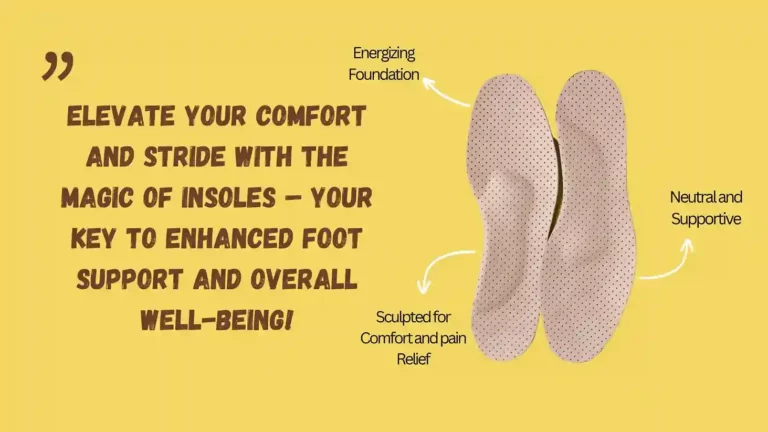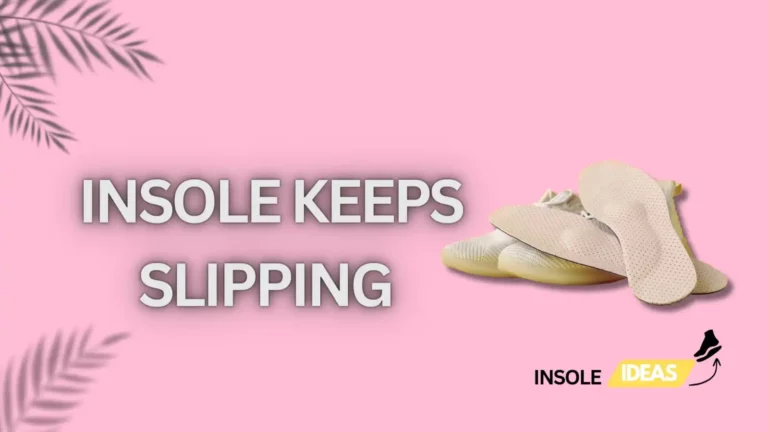The Foot Pain Mystery: Can Insoles Be the Culprit?
Insoles, those often overlooked shoe inserts, play a vital role in supporting the feet and maintaining overall foot health. However, a paradox emerges—can these seemingly supportive inserts actually cause foot pain? This introduction sets the stage for exploring the complexities surrounding insoles and their impact on foot health.
Overview of Insoles
Insoles, sometimes referred to as footbeds or shoe inserts, have a number of uses, including cushioning and alignment correction. They come in different materials and designs, aiming to enhance comfort and alleviate foot-related issues.
The Paradox: Can Insoles Cause Foot Pain?
Contrary to their intended purpose, poorly chosen or improperly fitted insoles might exacerbate existing foot problems or create new discomfort. This section delves into instances where insoles might contribute to foot pain.
Understanding Foot Anatomy
To comprehend the dynamics of insoles and their effects, understanding the intricate anatomy of the foot becomes crucial.
Foot Structure
The foot comprises numerous bones, ligaments, tendons, and muscles working synergistically to support body weight and enable mobility. Detailing this complex structure sheds light on how insoles interact with different foot components.
Foot Structure
The foot comprises numerous bones, ligaments, tendons, and muscles working synergistically to support body weight and enable mobility. Detailing this complex structure sheds light on how insoles interact with different foot components.
Impact of Arch Types
The diverse arch types—high, low, and neutral—significantly influence how weight is distributed across the feet. This section explores how insoles cater to specific arch types and their implications for comfort and support.
Role of Natural Pronation
Natural pronation, the foot’s inward rolling motion during walking, serves as a shock absorber. Understanding its role helps in assessing how insoles either support or disrupt this natural movement.
Mechanism of Action
Insoles operate through various mechanisms to address foot-related issues and enhance comfort during daily activities.
Alignment and Support
Proper alignment is key to foot health. Insoles aim to provide the necessary support to maintain correct foot posture, reducing strain on muscles and joints.
Pressure Distribution
Insoles aid in redistributing pressure across the foot’s surface, ensuring no specific area bears excessive weight, thus mitigating discomfort.
Shock Absorption
Impact absorption is crucial to prevent shocks from affecting the feet, ankles, and legs. Insoles equipped with shock-absorbing materials aim to minimize the impact of each step.
Common Foot Pain Issues
Understanding prevalent foot pain problems sheds light on the significance of insoles in alleviating discomfort and aiding in recovery.
Plantar Fasciitis
Aggravation of the tissue that interfaces the impact point unresolved issue toes is the reason for plantar fasciitis, one of the most pervasive foot conditions. This condition’s related discomfort can be reduced using insoles made to support and cushion the arch.
Metatarsalgia
Inflammation and discomfort are brought on by this ailment in the ball of the foot. Insoles with metatarsal pads or extra cushioning under the ball can help distribute pressure and reduce discomfort.
Arch Pain
Individuals with high or collapsed arches often experience arch pain. Insoles offering arch support tailored to the foot’s specific needs can alleviate this discomfort.
Heel Spurs
Bony protrusions on the heel bone called heel spurs can be quite painful. Insoles with heel cups or cushions can alleviate pressure and minimize discomfort during movement.
The Insole Dilemma
Exploring the advantages and potential drawbacks of using insoles presents a balanced view of their impact on foot health.
Pros of Using Insoles
Insoles provide customized support, improve comfort, and aid in correcting foot alignment, offering relief from various foot-related problems.
Potential Drawbacks
1. Initial Discomfort: Some users might experience initial discomfort as their feet adjust to the new support, which can deter consistent usage.
2. Incompatibility with Foot Structure: Ill-fitted or incompatible insoles might exacerbate existing foot issues instead of alleviating them, emphasizing the importance of proper selection.
Choosing the Right Insole
Selecting suitable insoles involves considering individual foot characteristics and seeking professional guidance.
Foot Analysis
Understanding one’s foot type, arch structure, and gait pattern helps in selecting the most appropriate insole for optimal support and comfort.
Consulting a Podiatrist
A podiatrist’s expertise assists in identifying specific foot issues and recommending tailored insoles to address them effectively.
Trying Different Types
Experimenting with various insole types allows individuals to find the most comfortable and supportive option for their feet.
Impact of Material on Comfort
Insoles crafted from materials like memory foam, gel, or EVA (ethylene-vinyl acetate) foam offer varying levels of cushioning and support. Understanding these material differences helps users select insoles that align with their comfort preferences.
Longevity of Insoles
The durability of insoles varies based on material quality and usage. Exploring material resilience assists in making informed decisions regarding replacement intervals for optimal support.
Breathability and Hygiene
Breathable materials like mesh or perforated fabrics aid in moisture-wicking, preventing bacterial growth and maintaining hygiene. Considering these aspects ensures insoles remain comfortable and odor-free.
Lifestyle Factors
Individual lifestyles and habits directly influence the effectiveness and comfort of insoles.
Activity Levels
Different activities exert varying pressures on the feet. Tailoring insole choices to match specific activities ensures adequate support during movement.
Footwear Choices
Insoles interact differently with various types of footwear. Understanding compatibility with different shoe styles helps in selecting appropriate insoles for different occasions.
Impact of Weight
Body weight affects the level of support required from insoles. Heavier individuals may need more robust and supportive insoles for comfort and stability.
Adjusting to Insoles
Transitioning to using insoles requires a gradual approach to maximize comfort and effectiveness.
Gradual Adaptation Techniques
Wearing insoles for short durations initially and gradually increasing usage allows the feet to adapt, minimizing discomfort during the adjustment period.
Common Mistakes to Avoid
Avoiding pitfalls like choosing improper sizes, ignoring discomfort during the adjustment phase, or expecting immediate results helps users navigate the initial challenges of using insoles.
Conclusion
In conclusion, while insoles can significantly enhance foot comfort and alleviate pain, their effectiveness depends on various factors. By understanding one’s foot anatomy, considering lifestyle factors, and selecting appropriate insoles with professional guidance, individuals can maximize the benefits and mitigate the potential drawbacks, leading to improved foot health and overall well-being.




